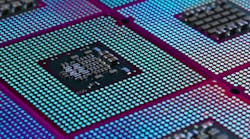Advanced Micro Devices is shedding light on its next generation of computer and graphics chips for corporate data centers, giving it more ammunition in its budding battle with Nvidia, which currently leads in the market for machine learning processors, as well as Intel, which holds more than 95 percent share in the growing market for upscale server chips.
Lisa Su, chief executive of the Santa Clara, California-based company, announced on Wednesday that the latest graphics chip based on its Vega architecture and manufactured with 7-nanometer technology had started sampling to customers. At the Computex conference located in Taipei, Taiwan, she said that the new Instinct processor would target machine learning training in data centers and be released before the end of the year.
Graphics chips, which are primarily employed to enhance rendering for video games, are increasingly being used to handle the highly repetitive task of training and running neural networks, machine learning's building blocks. Crucially, the chips contain thousands of cores that run many mathematical operations in parallel. The biggest beneficiary has been Nvidia, which recently reported that its first quarter revenue had grown from $1.94 billion to more than $3 billion over the last year.
Many companies are trying to dethrone Nvidia with new custom chip architectures or rival graphics chips. That includes Intel, which recently hired Raja Koduri, AMD's former chief graphics chip architect, to lead its new core and visual computing business. The chips that business builds could give Intel another way to pry into the machine learning market, coupling them with its server chips, which are needed to send instructions to graphics accelerators in data centers.
AMD could follow a similar strategy. The company recently announced that its latest Epyc server chip, codenamed "Rome" and based on its second-generation Zen architecture, would start sampling to customers in the second half of the year. The 7-nanometer processor, which will compete with Intel’s Xeon line, will be generally available next year. Customers for the first generation of AMD's Epyc chips include Hewlett Packard and Cisco.
The company also announced on Wednesday that its second series of high-performance personal computer chips, Threadripper, will be based on 12-nanometer technology and become available in the third quarter. AMD can use the 32-core processor to wrestle market share away from Intel, which recently announced a new 28-core processor capable of running at 5 gigahertz when overclocked.
